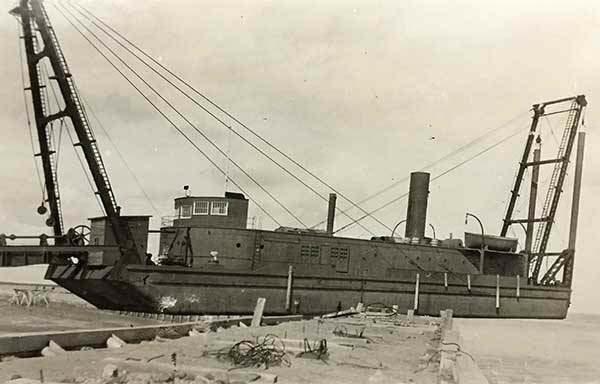From 1914 to 1924, the Port Nelson dredger operated in Manitoba, Canada.
Dredging is excavation that takes place in shallow or open ocean waters, partially or entirely underwater. By collecting and moving bottom sediments, it helps with coastal protection, land reclamation, and coastal redevelopment while maintaining the navigability of waterways and ports. Dredging typically has two main goals: to recover valuable or useful material or to increase the depth of the water.

The Polson Ironworks in Toronto, Ontario was given a contract by Canada’s Department of Railways and Canals to build a sizable suction dredger to aid in the construction of Port Nelson, the nation’s first port on the coast of the Arctic Ocean. She was finished in March 1914 and towed to Hudson’s Bay, where she ran aground as soon as she arrived in September. She was thrown onto the man-made island she helped to create by a storm in 1924, where her wreck is still visible today.
She was 180 feet (55 meters) long, had a beam of 43 feet (13 meters), a draft of 6 feet (1.8 meters), carried a crew of 35, and had a displacement of 1200 tonnes.
Around 1,000 people made up Port Nelson’s peak population at the beginning of the 20th century, but it is now a ghost town.




